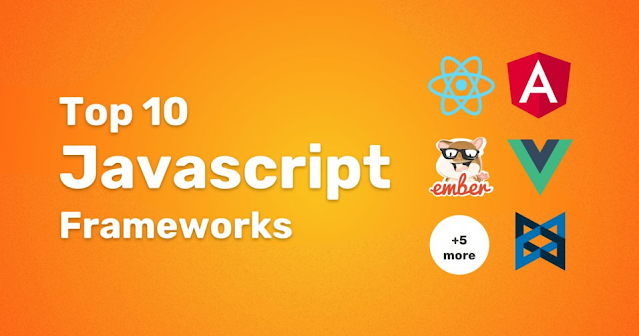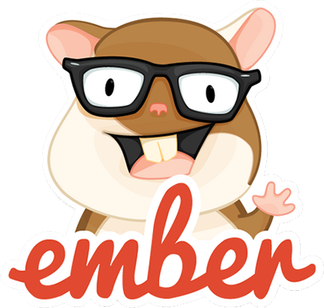Introduction:
In this article we will discuss Top 10 most used JavaScript frameworks in 2021.
What is JavaScript?
JavaScript is an event driven, functional, and compelling (including object-based) programming techniques and multiple paradigm language.. Initially, JavaScript was used on the client side solely. However, JavaScript is now also used as a server language of programming. In summary, JavaScript is the web language in just one simple phrase.
What is JavaScript Framework?
An abstract in which software with a general feature may be selectively altered via extra user-written code is a software framework. JavaScript is a JavaScript application framework in which programmers can manipulate and use the function for convenience.
Why use JavaScript frameworks?
Frameworks are more versatile for website design and are therefore preferred by most developers. JavaScript frames are a kind of tool that makes it easier and smoother to deal with JavaScript. These frameworks also allow the programmer to code the application as a device. The JavaScript frameworks are another reason why they are quite popular when you talk about employing a high-level machine language. Let the greatest JS frameworks be examined in 2021.
Top 10 JavaScript Frameworks
1. Angular
One of strongest, open source and most effective framework of JavaScript is Angular. This framework is implemented by Google to construct a single page application (SPA). It expands the HTML to the app and evaluates data binding attributes.
Features
Cross-Platform
- Advanced web applications: Modern web platform capabilities for high performance app-like, offline and zero-step installation experiences.
- Native: The native application is built using strategies from Cordova, Ionic, or Native Script.
- Desktop: Desktop-installed applications can be built on Mac, Windows and Linux using the same programming processes as the web and accessing native OS APIs.
Speed and Performance
- Generation of code: Angular transforms templates into highly optimized code, which gives hand-written advantages for JavaScript virtual machines.
- Universal: Serve the first view for HTML and CSS-only Node.js, .NET, PHP, or other servers.
- Code division: The new Component Router swiftly loads angular projects and provides automated code division. Users therefore load the code they want to display.
Productivity
- Templates: Simple and powerful template syntax for creation of UI views.
- Angular CLI: Tools on command line: start quickly constructing, add components and testing and then deploy instantly.
- IDEs: Get smart code completion, quick bugs, and feedback from popular editors and IDEs.
Full Development Story
- Testing: Protractor will speed up and stabilize your scenario tests.
- Animation: Create high-performing, complicated and animated choreographies with very little code with Angular's straightforward API.
- Accessibility: Creating ARIA-enabled applications, developer guidelines and integrated a11y test infrastructure.
2. React
The React Framework, created by Facebook, has become popular in a little period of time. It uses the dynamic user interface of websites with significant traffic to be developed and operated. It makes the use of a virtual DOM, and hence it is easier to integrate it with every programme.
Features
- Statement: Creates dynamic and interactive user interfaces for websites and mobile apps. Render the proper components when data changes react efficiently to updates. Declarative views make it easy to read and debug the code.
- Virtual DOM: A equivalent "virtual DOM object" is available for each DOM object. It makes an original DOM virtual copy and is a DOM object representation,
- Event Handling: React has constructed its completely supporting event model framework for the W3C object. It also gives an interface for a native event, which means that no incompatible event and field names have to worry about. React decreases the memory head by implementing the event system via event delegation and a pool of objects.
- JSX: JSX is an HTML-like benchmarking syntax. By making the syntax almost the same as the HTML inserted into our Web page JSX facilitates reacting components.
- Performance: React uses a one-way data connection with Flux controls application design. ReactJS helps refresh the User View, and the application workflow is controlled by Flux. Virtual DOM brings benefits by instantly updating the view and comparing the new data with the updated DOM.
- React Native: React Native is a specialized react renderer; instead of web components as building blocks, it employs Native components. It also allows access to the functionality of these platforms, only that React code is transformed into iOS and Android.
- Component-Based: All is a part of the web page that is separated into small pieces to generate a view (or UIs). All the visuals in the programme would be wrapped into an independent module called a component. Reactjs components are used to define applications' aesthetics and interactions.
3. Vue.Js
Although the JavaScript framework was developed in 2016, it has already entered the market and has proved its usefulness by providing many capabilities. Its dual manner of integration is one of the most attiring functions in constructing high-end SPA or single-page application. It is a very solid platform for cross-platform development.
Features
- Virtual DOM: The virtual DOM is used by Vue.js. Virtual DOM is the main DOM element clone. Any update intended for the DOM in JavaScript data structures comparable to the initial data structure is absorbed by the virtual DOM.
- Final updates reflecting the true DOM are seen from the viewers. The method is inventive and affordable; modifications are also made rapidly.
- Data Binding: This feature makes it possible to manipulate or assign HTML attributes values, modify the style, assign v-bind classes which are binding.
- CSS Transitions and Animations: This feature provides many techniques to apply a transition to HTML items when inserted, updated or removed from DOM. Its characteristics consist of an integrated component wrapping the element which returns the transition effect.
- Template: It offers HTML templates that connect the DOM to the instance data of Vue.js. The templates are added to the functions of virtual DOM renderer. A developer may use the template for rendering functions and can substitute the render function for the template.
- Methods: We employ methods when an event does not necessarily link with the transformation of the instance data or wants the status of a component to be changed. Methods can take parameters, rather than record any dependencies.
- Complexity: The API and architecture of Vue.js are simpler. In one day, a web developer creates simple applications.
4. Ember.js
The market for software was introduced in 2015 by Ember.js, and its broad application field has gained popularity since then. The characteristics of Ember.js support the trustworthy platform for managing intricate user interfaces and hence support two-way data binding. The Ember.JS technology is utilized by popular websites such as LinkedIn, Netflix, Nordstrom and much more.
- Create practical and convenient online applications for JavaScript maintenance.
- The development model at the core offers HTML and CSS.
- Furnishes initializers for instance.
- Ember.js supports routes that are key to URL management.
- Ember.js is the debugging instrument of the Ember Inspector.
- Ember.js uses templates to update the model automatically whenever the apps' content changes.
5. Meteor
Meteor's area of application (such as Meteor.js or MeteorJS) is used by its own name, because it varies as it covers the majority of software development. The uses of this framework cover important areas such as back-end development, database management, business logic and front-end rendering.
Full-Stack Solution
Meteor is a comprehensive solution for web apps development and deployment.
The framework has various integrated capabilities such as automated CSS, reactive templates and JS server mining.
The cloud platform of Galaxy is powerful for customer deployment, scaling, and monitoring.
It also includes useful technology on the client's side, such as templates, assistants and events.
Development Ecosystem
Meteor.js is an open source Isomorphic Development Ecosystem (IDevE)rather than merely a JavaScript development framework. It makes it easier to construct web apps in real time since it comprises all the necessary front and back end components. It supports developers across the entire lifetime of app development, from setup and development to deployment.
Isomorphic JavaScript Code
On the front end, back end, mobile and web applications the same code can be utilized. It prevents developers who need different module managers, libraries, drivers, APIs and more to install and configure them.
Meteor enables developers to utilize JavaScript's capability and reduce code length and complexity, saving developers a lot of production time to move context between server and JavaScript language.
Front-end Solution
Meteor includes Blaze.js, which offers some important capabilities, a front end development framework. It also incorporates popular, current frameworks such as Backbone.js to produce better outcomes.
Meteor offers insulated APIs that enable developers to handle client-server management and server session management in communications between front-end and back-end.
In that context, data transfer is automatic between client and server and no boilerplate code needs to be written.
Database Integration
The only drawback that Meteor.js supports from now on is the MongoDB. So, if you need NoSQL database support for your applications, you can't utilize meteor.
6. Mithril
Mithril is a JavaScript client-side framework that is mostly used to construct single page applications. Since there are no functions derived from a basic class, it is easier to create the framework. It's compact (<8kbgzip), quick and offers XHR and routing services. It contains some react-like features.
Full-Stack Solution
- Meteor is a complete stack solution for web apps development and deployment.
- The frame offers various integrated capabilities, including automated CSS, reactive templates, and production server JS minification.
- Galaxy, its cloud platform, deploys, scales and monitors customer applications.
- It is also packaged with valuable customer technology, including templates, assistants and events.
Development Ecosystem
Meteor.js is an open-source for Isomorphic Development Ecosystem (IDevE) not just as a JavaScript framework. It enables the construction of web applications in real-time from scratch, because all the required front-end and back-end components are included. Thus the full lifetime of the app development, from setup and development to implementation, supports the developers.
Isomorphic JavaScript Code
- On the web applications, front-end, back-end and mobile the same code can be used. It protects developers that need different module managers, libraries, drivers, APIs and more to install and setup.
- With Meteor, developers can use the power of JavaScript while minimizing code duration and complexity and can save a lot of development time to switch between JavaScript and server language.
Front-end Solution
- Meteor includes Blaze.js, which offers several essential capabilities as a front-end development framework. It also incorporates popular, contemporary front ends such as Backbone.js to produce better outcomes.
- Meteor supports isomorphic APIs which allow developers to control Client Server Management and Server Session Management in communication between front-end and back-end.
- In this context, data communications between client and server are automatic and do not require any boiler plate code to be written.
Database Integration
The only drawback that Meteor.js supports from now on is the MongoDB. So, if you need NoSQL database support for your applications, you can't utilize meteor.
7. Node.js
Node.js is the run-time environment for JavaScript server-side that is open source and works on several platforms. With its event-driven design it is possible to drive asynchronous I/O. It functions in JavaScript Runtime and shows similar JAVA characteristics such as threading, packing, and shaping loops.
Features:
1. It is swift:
Node.js library is quick to execute code because it is built on Google Chrome's V8 JavaScript engine.
2. I/O is asynchronous and Event-Driven:
All APIs are asynchronous, so your server does not wait till the API returns with data. The server calls the APIs one by one and moves to the next one while using an Event Notification Mechanism to create a reply from the previously contacted API. That's also quick.
3. Single-threaded:
Node.js adopts a single-threaded paradigm together with event looping.
4. Highly scalable:
Node.js uses an event system which allows the server to react in a non-blocking way and ultimately makes it scalable.
5. No buffering:
Node.js considerably reduces the duration of processing when it comes to uploading audio and video files. There is no data buffer, and the application distributes the data in pieces here.
6. Open source:
The Community of Node.js has developed some awesome models to add more capacities for Node.js applications as an open source.
7. License:
It has been released under MIT license.
8. Polymer
The Polymer is a Google-developed open source JavaScript library that can generate elements of the website without moving to a complicated level. In addition, the data binding enables one-way and two-way, making the application area more comprehensive.
Features:
- Polymer.js is a JavaScript framework based on the most straightforward approach to construct customized HTML components on top of a Web Standard APIs.
- The polyfills are provided for the creation of personalized and reusable items.
- It is used in online publications and applications to create reusable widgets.
- Google's material design enables it to develop mobile apps to develop mobile apps quickly and easily.
- The individual elements are spread over the network and can be used by users using HTML imports.
9. Aurelia
Aurelia framework is the latest JavaScript version, which may be used for any interface implementation. It is the next generation for designing websites that are much more powerful. Aurelia's framework may expand HTML to provide data binding for various reasons. Its contemporary architecture ensures that tolls serve the customer and the server side at the same time.
Features:
- Components: The components are Aurelia framework building blocks and consist of JavaScript view model pairs and HTML views.
- Web standards: It is one of the most smooth and current settings. Without extraneous abstractions it focuses entirely on Web standards.
- Extensible: the framework makes integration with the other necessary technologies easy.
- Commercial support: commercial and corporate support is provided in this framework.
- License: open-sourced and MIT licensed Aurelia.
10. Backbone.js
The JavaScript Frameworks is one of the most popular. It's easy to learn and understand. It is useful to design applications for a single page. This framework develops the idea that all functions on the server must run an API that would contribute to complicated features by writing less code.
Features:
- BackboneJS employs JavaScript features, making it much easier to design apps and the frontend.
- The assembly of customer-side web applications includes building components like models, views, events, routers and collections.
- It is a basic library that supports business-to-use logic separation.
- It is a free, open-source library with over 100 extensions available.
- It is the backbone of any project and helps to develop the code.
- BackboneJS has a light jQuery reliance and a strong underscore.js reliance.
- We can design customer-sided web apps or mobile apps in a systematic and well-organized way.
Conclusion
JavaScript remains the dominant language when it comes to Web development, which is why we have various JavaScript frameworks to choose from. Want to select the ideal one for your project from our suggested list of frameworks for JavaScript. Therefore, before choosing your application framework, analyze your project needs carefully because each setting has unique capabilities that you may need during the development process. Take the curve, complexity, compatibility documentation as well as Community assistance into account in addition to the features.
That concludes our 10 top frameworks for JavaScript. What's your favorite one? Any extraordinary JS framework we missed?

















Angular and vue.js are most popular and easy to use JavaScript frameworks.
ReplyDeleteGreat job.
ReplyDeleteAwsome
ReplyDelete